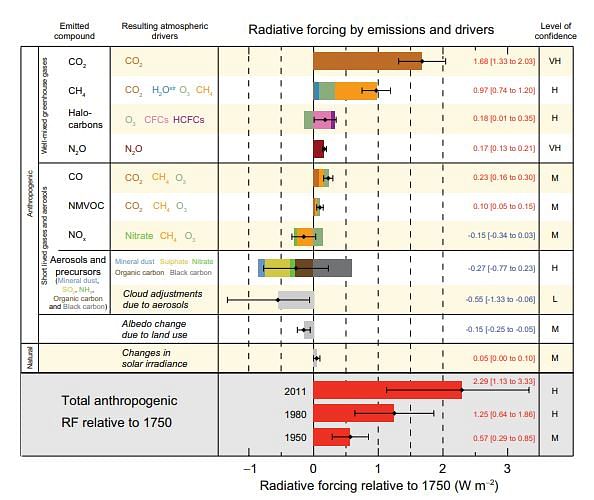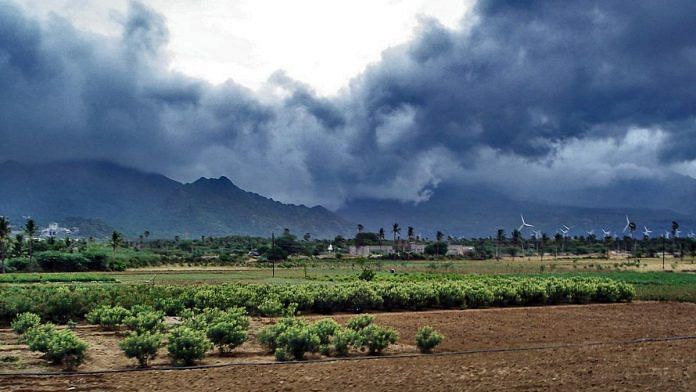New Delhi: This year’s monsoon season was the heaviest since 1994, according to the Indian Meteorological Department (IMD). The heavy rains affected over 25 lakh people in 22 states, while 2,100 people lost their lives and 46 were reported missing.
India received 10 per cent more rainfall than the long period average (LPA) — the 50-year yardstick that determines whether rains in a given year are deficient, normal or in excess — but none of the dynamical models adopted by the IMD for monsoon projections could accurately predict that.
In fact, they predicted a less-than average monsoon this season — an initial forecast of 94 per cent was updated to 99 per cent.
Seasonal predictions like those for the monsoon are made using computer simulations that employ meteorological models that analyse current weather conditions to predict how they will change days or weeks into the future.
Similarly, climate predictions such as those made by the UN Intergovernmental Panel on Climate Change (IPCC) use climate models and computer simulations to project how variables like temperature, precipitation, air and ocean circulation patterns, etc. will evolve decades or centuries into the future, given current conditions and different greenhouse gas emissions scenarios.
These models are not perfect, and the projections can be quite different from how things turn out in real life with serious implications for society.
One of the greatest scientific challenges in modelling are clouds. In fact, clouds are the largest single source of uncertainty in our predictions of future climate change.
When we look at the sky on a cloudy day we might see the shapes of a sheep or a tree, but a climate scientist would note the size, shape, height and colour of the clouds, which determine their nature.
Whether they will rain or not, whether they are fleeting or slow travellers, and how much sunshine they will reflect back to space — the answers to all of these questions depend greatly on their physical characteristics and process of formation, often in convoluted ways.
Warmers and Coolers
Clouds directly affect our climate through two major, contradictory processes — they reflect part of the solar radiation that falls upon them back into space, which cools the planet, and, they also absorb thermal radiation coming from the surface and emit it back onto the surface which heats the planet like a greenhouse gas.
“The net effect depends on the type of cloud — very thin, high clouds such as cirrus clouds reflect little sunlight, but they are very efficient at absorbing thermal radiation, so they are strong warmers,” explained Dr George Tselioudis, senior scientist at NASA Goddard Institute for Space Studies, to ThePrint.
“Thick, low clouds are exactly the opposite, they absorb little heat, but they reflect a large part of solar radiation, which makes them strong coolers. Anything in between will have a mixed effect, there are cloud types that can be neutral as well,” he added.
“At present, the cooling effect dominates the warming effect and hence the net effect of clouds is a cooling,” said Govindasamy Bala, professor at the Center for Atmospheric and Oceanic Sciences at the Indian Institute of Science in Bengaluru, in an email.
“One of the most important scientific questions is what happens to this net effect as the planet warms. Is the net cooling reduced or increased under climate change?”
In other words, with the changing climate, are we going to have more warming clouds than cooling clouds or the opposite?
This has major implications for climate modellers that run computer simulations at the global scale to make projections for future climate change. The models must be able to account for the various types of clouds, their geographical distribution, and how that will evolve with time.
“The main challenge for modelling is the scale — cloud processes, that include formation of the first cloud particle which then grows bigger with more particles coalescing and ultimately leads to rain or snow, occur on a wide scale between 10^-4 m to 10 km, while global climate models run on the scale of 100 km x100 km,” said Tselioudis.
This makes it practically impossible to explicitly and accurately include all aspects of cloud physics in climate models. Instead, the models must make certain simplifications.
“There are large uncertainties associated with the parameters used in these models. The gap between the scale of clouds and the scales that models can simulate is the fundamental reason why we have difficulty in dealing with clouds in models,” said Bala.
Also read: Climate fight takes a step back with no deal on carbon markets
Zooming in
As we go down in scale, however, from the typical 100 km x 100 km to finer resolutions in the simulations, the description of clouds gets more and more accurate. A study published in the Journal of Advances in Modelling Earth Systems earlier this year showed how cloud properties can be modelled accurately in comprehensive higher resolution simulations that go down to 1 km x 1 km or even 100 m x 100 m range.
According to the study, the regional simulations can then be used in combination with global climate models instead of making ‘simplifications’ in regions where they fail. This would mean a lot more computation time and resources but hopefully more accurate cloud representation.
Nevertheless, the wide-ranging characteristics and predicting how they will evolve in the future makes clouds very challenging to model at all scales. Even though recent developments using satellite measurements have greatly advanced our understanding of clouds, they remain the largest single source of uncertainty in climate projections.

According to Tselioudis, the uncertainty that clouds introduce in our estimates of Earth’s energy balance could be as high as 20%. The energy balance is estimated by calculating how much solar radiation reaches Earth’s surface, how much of it is absorbed and how much of it is reflected back, which ultimately determines how much global heating we will experience in the future.
At the regional and seasonal scale, monsoon projections also depend on the ability to describe clouds in model simulations. While the main reason why monsoons are tough to predict is due to natural weather variability which is hard to predict beyond 5-7 days, the distribution and evolution of clouds along with air circulation patterns ultimately determine rainfall distribution.
The monsoon timescale of about 3-4 months or 120 days is particularly difficult to model accurately. “Theory tells us that weather can be predicted with reasonable skill in advance of only 5-7 days. Also, climate change over 30 or more years can be projected,” said Bala. “However, there is literally very little prediction skill for any phenomena with a timescale in between.”
In order to fill this gap, “we need to make a lot more observations than we are making currently”, said Tselioudis. More monitoring stations both on land and on satellites in orbit need to be setup to measure cloud properties. “It’s a chain — better observations will lead to better understanding which will lead to better modelling,” he added.
Our understanding of clouds not only affects our projections of future cloud distribution and Earth’s radiation balance, but also all other aspects of future climate change that are related to clouds such as rainfall and air circulation patterns.
Clouds may hold the key to an advanced understanding of our climate system and improved climate projections into the future.
The author is a freelancer and has a keen interest in climate change and science.
Also read: First map of Saturn’s largest moon Titan revealed, shows features similar to Earth



